Our Antarctic research project is split into two field teams. Dave and Ari are aboard the 230-foot Antarctic Research Vessel Laurence M. Gould, which is conducting surveys and experiments at a large-scale along the entire Antarctic Peninsula. They left yesterday morning and we won’t see them again for a month.
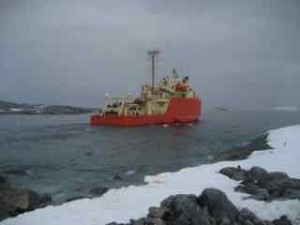
Ari and Dave will tag 10 humpback whales with transmitters that send signals to orbiting satellites, so that we can follow the whales’ movements for a month or two. Hopefully the whales will tell us something about the distribution of krill, their primary food, along the Peninsula. In addition, they will be collecting tiny skin biopsies from which we can determine sex, measure reproductive hormones, describe recent feeding history, and measure population structure. They will also photograph whale flukes to determine the identity of each whale (more about both of these techniques later).
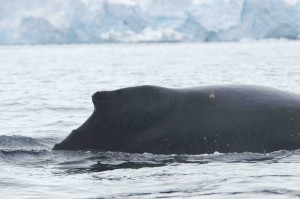
Meanwhile, Zach and I will be working from a much smaller boat – an inflatable Zodiac that we launch each morning at Palmer Station. We will be using a scientific echosounder to map krill at a very fine-scale around Palmer Station to see how whales react to fine-scale variation in prey abundance. And we will also be collecting fluke photographs and biopsy samples from the whales that we see near the Station. The good news for us is that we come home every evening (and often for lunch as well) to a well-supplied research station with a chef, bar and workout room (and much more about life at palmer Station later, as well).
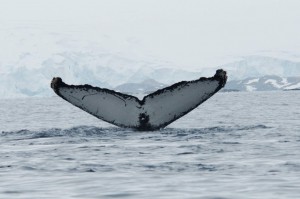
Yesterday Zach and I calibrated our fancy echosounder, which sounds pretty technical, but in reality involves suspending a small metal sphere under the echosounder transducer with a fishing pole. It was finicky work in a mixture of cold rain and wet snow, but we managed to get the instruments calibrated.
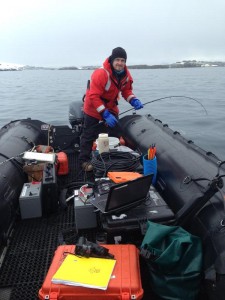
Midway through the calibration we were surprised by a leopard seal that surfaced right next to our very small Zodiac and snorted at us. Fortunately he (or she) decided not to get into the boat with us or to bite the rubber pontoons (yes, they have been known to do that).
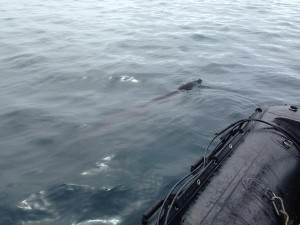
Check back in a day or two and we’ll update you about the results of our first krill and whale surveys.
